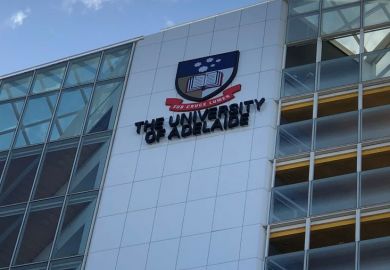Proposals to merge South Australian universities are nothing new, though in the past have always failed. But now a proposal to merge the two larger universities, the universities of Adelaide and South Australia, has been agreed by both councils, enthusiastically outpacing the state government’s earlier promise of a merger commission to consider the concept.
While staff commentary has been almost inaudible, save via a broad National Tertiary Education Union survey that found only 25 per cent of the state’s university staff supported the merger, non-government MPs, who hold the majority in the state upper house, have expressed reservations. So a pause in presenting enacting legislation has been called until a parliamentary joint committee has considered the merger’s merits.
Meanwhile, a major national development has suddenly overshadowed the entire discussion. Last month, the federal education ministry released the interim report of the new Australian Universities Accord, its vision of the future shape of the whole nation’s higher education system. While the full report is not due until year-end, it is already clear that it will bring the most far-reaching reform of the Australian university system since the “Dawkins Revolution” – the major reshaping of the sector by then education minister John Dawkins 35 years ago.
In 1988, Dawkins announced that a large, comprehensive model would henceforth be the sole template for public universities in Australia. Through a series of mergers, this delivered much-needed mass access, but it also brought a certain sameness to the institutions, and the accord has now concluded that the Dawkins model lacks the nimbleness to respond to the dramatically changed intellectual, economic, technological and cultural expectations of higher education today.
The accord instead wants Australia’s higher education institutions transformed into a diverse array of types, including not only research-intensive universities but teaching-only colleges, professional training schools, perhaps residential campuses, and a network of regional and suburban study centres. Some universities may cluster around an urgent purpose, others proceed by networks and partnerships. All will be required to have clearly differentiated missions.
Legislation to enable the accord will not reach the national parliament until 2024, but most states will undoubtedly start exploring the new opportunities it signals sooner than that. There will probably be moves to customise and differentiate the missions of existing universities, establish the regional study centres, explore urgent challenges through networks and plan new, modest-sized, specialist universities. Yet South Australia plans not to add but to subtract from its existing three universities, creating a one-size-fits-all comprehensive on a truly unprecedented scale.
Nor is this the only way in which, by 2026, when the merger is to be launched, South Australia will probably find itself out of step with the rest of the nation. The accord also foreshadows dramatic change to the funding of universities. Australia’s much-admired income-contingent student loans scheme, which has now ballooned into a worryingly large national debt, will be altered into a “universal learning entitlement”. Less dependence on international student fees is foreshadowed, as are restrictions on the cross-subsidy of research by student fees. Yet the Adelaide merger hopes for a massive increase of international students to bankroll a “transformational investment in research”.
So, what would the impact of this merger be on the South Australian economy and society? The vision statement, “A university for the future”, presents only generic ambitions: among them, to achieve an enduring top 100 ranking, to better address access and equity for disadvantaged and minority groups, and to contribute strongly to the growth of the state economy. It seems less like a vision than a carefully worded compromise between two competitors.
This is a sharp contrast to the founding vision of the University of Manchester 20 years ago, which presented a very specific 10-year strategy with nine quantified goals. Importantly, the boldness and freshness of the Manchester merger vision was an outcome of recruiting at the outset a founding vice-chancellor – former University of Melbourne head Alan Gilbert – who brought no preconceptions from prior involvement with either institution.
The existing Manchester v-cs’ retirement plans made it possible to install the Australian eight months before the official opening of the merged university. The Adelaide transition plan, by contrast, envisages three years during which the incumbents continue as “rotating co-vice-chancellors”, a period extending a full year beyond the merged institution’s opening.
So, what should the plan be for South Australia’s universities as the accord reforms approach? The state already has a highly ranked institution, the University of Adelaide, which is relatively large by international standards. Moreover, all three of its universities have a fine record of addressing equity groups and disadvantaged students. Together, they have made higher education the state’s leading export and contributed greatly to its economy through research and innovation in its leading industries – notably wine, mining and agriculture.
Undoubtedly, the real challenge for South Australia in the coming accord environment will be to customise the missions of its universities so that all three can focus more strongly on their principal strengths and fields of research, becoming magnets for business investment. Staying midsize would keep them nimble enough to grasp the opportunities the accord presents and free the A$445 million (£224 million) pledged to the merger by the state government to help them do so.
Warren Bebbington is professorial fellow at the Centre for Studies in Higher Education, University of Melbourne. He was vice-chancellor of the University of Adelaide between 2012 and 2017.
Register to continue
Why register?
- Registration is free and only takes a moment
- Once registered, you can read 3 articles a month
- Sign up for our newsletter
Subscribe
Or subscribe for unlimited access to:
- Unlimited access to news, views, insights & reviews
- Digital editions
- Digital access to THE’s university and college rankings analysis
Already registered or a current subscriber? Login








